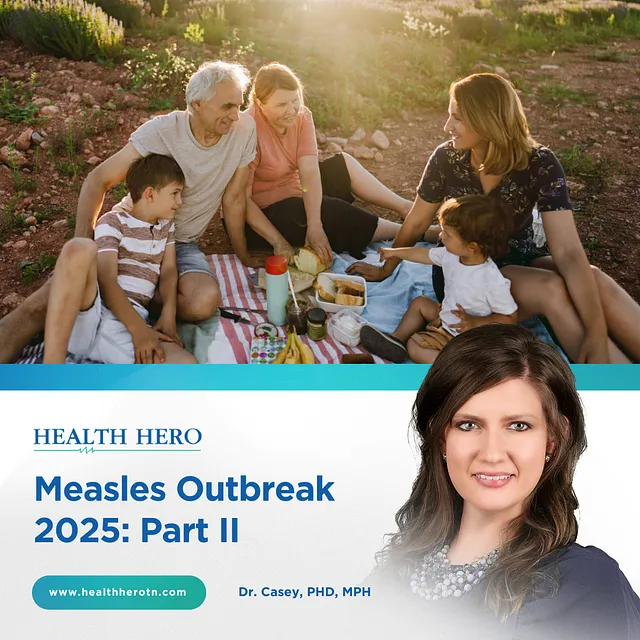Vaccine-preventable diseases are rising despite the widespread availability of a highly effective vaccine, showing a decline in vaccine confidence. Measles, once nearly eradicated in the U.S., is popping up in certain states due to declining childhood vaccination rates. This resurgence of vaccine-preventable diseases should be a warning to parents, as it poses a serious risk to children’s health.
There has always been an immunization rate target that public health experts set out which is the baseline to prevent certain diseases from spreading. That’s a 95% immunization rate. Once this rate falls below the 95% threshold, a critical barrier of protection is lost and could result in widespread outbreaks. Reaching 95% may seem daunting, but parents can play an important role by taking the right steps, understanding the importance of vaccinations, and actively combating misinformation.
Why 95% Immunization Coverage Matters
So, why 95%? This target is set out because it ensures a majority of children have the needed protection against vaccine-preventable diseases. The vaccine works by preparing the immune system to fight infections, preventing severe illness, complications, and long-term health effects that can come from diseases like measles, polio, and whooping cough.
For children, vaccination is particularly important because their immune systems are still developing, making them more vulnerable to infections. Many vaccine-preventable diseases can lead to serious complications, including hospitalization, long-term disabilities, or even death. Measles, for example, is one of the most contagious diseases, spreading to 90% of unvaccinated people exposed to an infected person. Once infected, symptoms can become severe, ranging from ear infections and pneumonia to encephalitis and even death.
Addressing Misinformation and Vaccine Hesitancy
The decline in vaccination rates is not due to a lack of access to vaccines but has been largely driven by misinformation and vaccine hesitancy. The internet and social media platforms have become breeding grounds for misleading claims, making it difficult for parents to discern facts from fiction. According to a study by Pew Research, social media plays a big role in news consumption, with 54% of U.S. adults saying they get some of their news input from social apps, which can contain misinformation, conspiracy theories, and other misleading content.
During a time when technology is easily accessible but online information can be unreliable, parents can take several steps to verify the accuracy of what they read:
● Rely on Credible Sources: Trustworthy organizations such as the Centers for Disease Control and Prevention (CDC), the World Health Organization (WHO), and state health departments provide accurate, research-backed information on vaccines.
● Consult Healthcare Professionals: Pediatricians and family doctors are the best resources for addressing concerns about vaccine safety and efficacy. These experts rely on decades of clinical research and firsthand experience.
● Understand the Science: Vaccines undergo rigorous testing for safety and effectiveness before being approved. The risk of serious side effects is extremely low compared to the dangers posed by preventable diseases.
● Engage in Constructive Conversations: When discussing vaccines with skeptical friends or family members, approach the conversation with empathy, addressing their concerns with factual, non-confrontational responses.
Taking Action: Keeping Your Child Vaccinated
If your child is due for immunizations, schedule an appointment with your healthcare provider or local public health department. The worst thing you can do is put it off until it’s too late. No one wants their child to be sick, especially if they contract a preventable disease.
While discussions and debates around vaccines continue, the fundamental truth remains: vaccines save lives. Throughout history, vaccines have been proven to prevent the spread of infectious diseases. From eradicating smallpox to significantly lowering cases of polio, measles, and other life-threatening illnesses, their impact is undeniable. While it is natural for people to seek information and question medical advancements, the overwhelming body of evidence supports the fact that vaccines protect people.
By keeping up to date with vaccine information and ensuring your child receives vaccinations on time, you can help reach that 95% threshold and prevent the resurgence of preventable diseases.
Sources:
CDC: Coverage with Selected Vaccines and Exemption Rates Among Children in Kindergarten — United States, 2023–24 School Year
Pew Research Centre: Social Media and News Fact Sheet
U.S. Food and Drug: Vaccines Protect Children From Harmful Infectious Diseases


